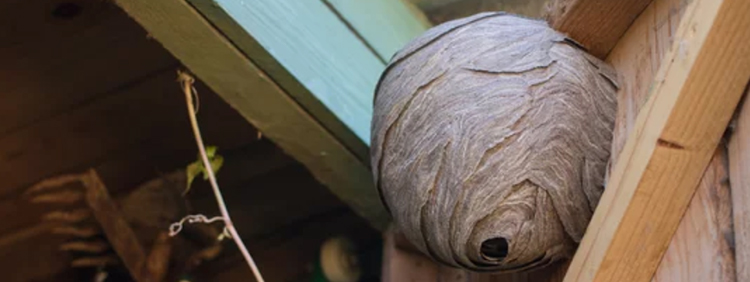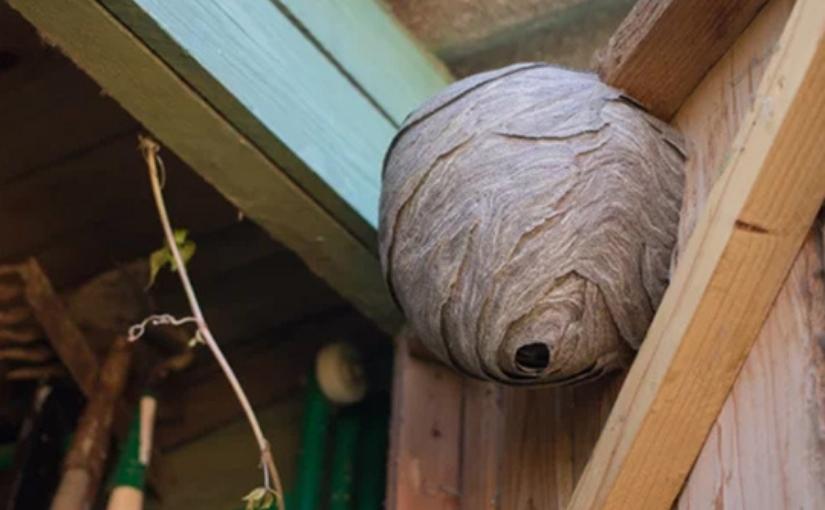
Living in Barrie, with its lovely views of Kempenfelt Bay and its many parks and nature trails, provides homeowners like yourself the opportunity to appreciate all the nature the area has to offer, from small mammals to insects, such as wasps. Coming across a wasp nest on your property may give you cause for alarm; however, we at Truly Nolen are standing by with wasp removal services and some information about how these enterprising insects make and use their homes.
Wasp Nest Construction
There are several different types of wasps in the Barrie area, including paper wasps, yellowjackets and hornets. While they all appear somewhat similar, with thin waists and shiny exoskeletons, each constructs their nests differently. The differences are many and include:
- Location
- The material used
- The shape of the nest
You may be able to identify the type of wasp on your property by where you find the nest. Yellowjackets tend to build their nests in the ground, in abandoned burrows and other holes, while paper wasps and hornets create above-ground enclosed nests that resemble footballs. Calling us for wasp removal can help you further identify what species you have encountered, as our pest technicians have plenty of experience with these potentially dangerous insects, as well as their nesting habits.
The Life Cycle of a Wasp Nest
When spring arrives in Barrie, wasp queens come out of hibernation and search for a place to nest, taking several worker wasps with her. Once the queen chooses a location, the worker wasps will begin to build the nest, using a mixture of chewed wood fiber and saliva. All species build individual chambers that will house the larvae once they hatch.
The size of the colony can grow quickly, despite the relatively short lifespan of the worker wasps. While the queen can live up to a year, sterile female workers only live about three weeks but are replaced by others who carry on the work of feeding the larvae. In turn, the larvae produce a sugary nectar that the adult wasps eat. This cycle continues over the summer, and a paper wasp, yellowjacket or hornet nest can hold over 30 adults and countless larvae.
The Death of a Nest
The wasp queen will lay eggs until the cooler fall weather comes and the larvae grow into adults and leave the nest. Soon after, most of the workers will die off and the queen will either perish or find a place to hibernate, usually underground. Once the nest empties, it remains as a dead husk, as no species of wasp reuses a nest and will always build a new home the following spring.
If you happen to find a wasp nest in the fall, it is important to call us for pest control in Barrie, as there may be some adults left. Once the larvae mature and leave the nest, the remaining workers will then have to find their own food, which makes them aggressive and a nuisance at pools and picnics as they search for sugar-rich meals. By the end of the fall, the remaining workers die and the cycle ends until the following spring.
Call us for Wasp Removal
No matter when you find a nest, calling us for assistance can help keep you and your family safe. Our technicians will assess the area, identify the species and remove the nest and any living insects. They can also provide you with solutions for keeping your property free of nests the following year, such as cleaning wood clutter and outbuildings and treating areas where wasps tend to build, such as under the eaves of your porch.
As a Barrie homeowner, keeping your home and family protected against stinging insects can be a challenge, but we are always standing by to assist you. Contact us today to discover more about our services and ways to make sure wasps buzz off for good.
